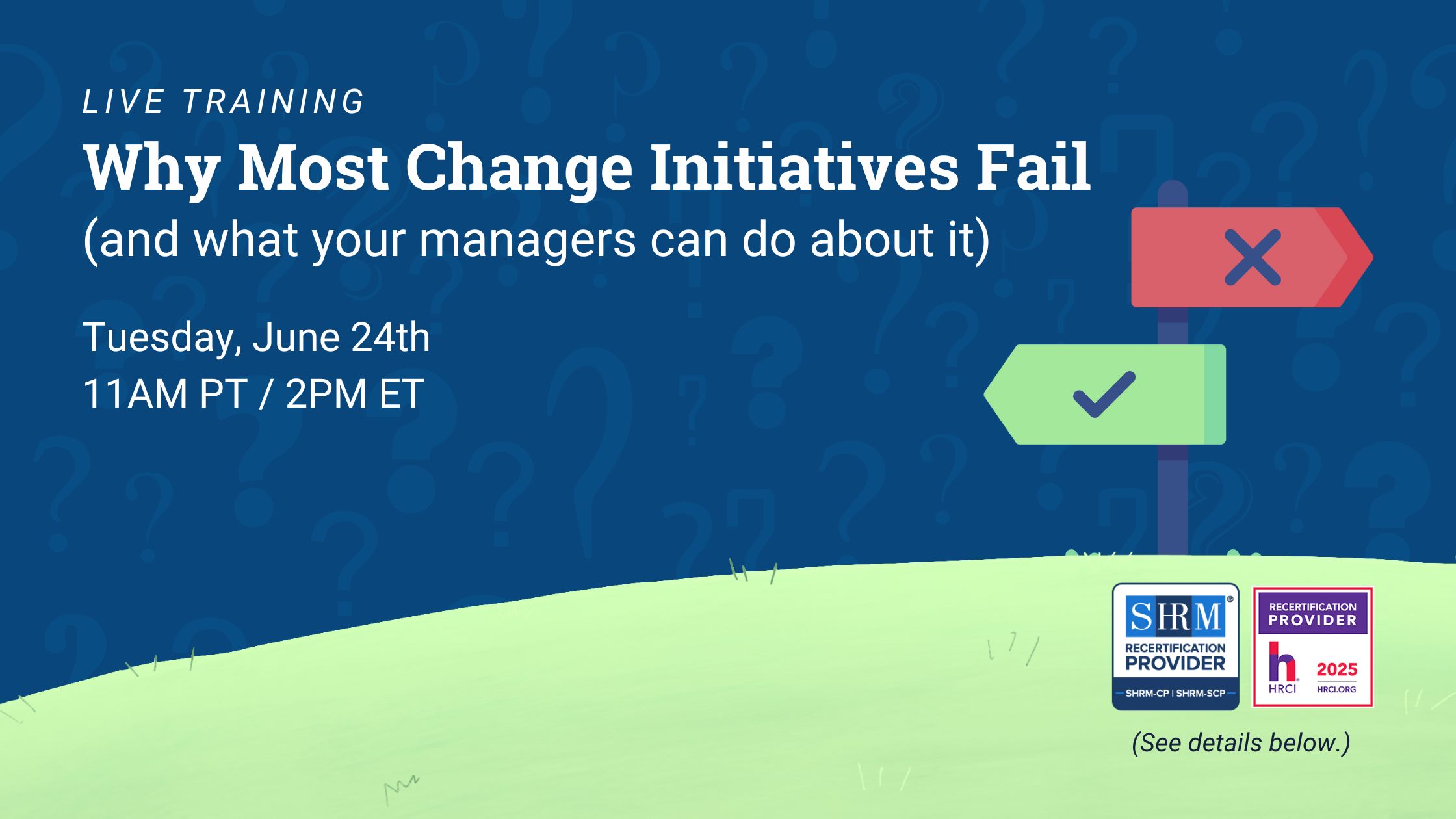Have you noticed that some employees seem constantly on edge, miss project deadlines, are increasingly absent, or lack initiative and engagement? These behaviors could be signs of a toxic work environment. As an employer, ignoring these red flags can have serious consequences. High employee turnover, nosediving morale, and sluggish productivity are just a few ways a toxic culture can eat away at your bottom line.
This article will equip you with the knowledge to identify the signs of a toxic workplace. By understanding these warning signals, you can take proactive steps to prevent and address them, and instead cultivate a positive company culture.
What Is Considered a Toxic Workplace?
A toxic workplace is characterized by a chronic state of dysfunction and negative behaviors that severely impair organizational health and employee well-being. It is marked not merely by isolated incidents or individual actors but by pervasive, systemic issues that are deeply embedded in the workplace culture.
Such an environment typically manifests through widespread disrespect, lack of trust, and aggressive behaviors that may include bullying, harassment, or undue pressure. It also features poor communication, with secrecy or misinformation prevalent, and a general atmosphere of fear or constant anxiety. Leadership in a toxic workplace often demonstrates favoritism, inconsistency, and a disregard for employee welfare, leading to a feeling of instability and injustice among staff.
Significantly, while many organizations might exhibit one or more of these negative traits occasionally—such as a temporary increase in pressure to meet a deadline or an isolated incident of poor communication—this does not necessarily indicate a toxic workplace. The distinction lies in the frequency, intensity, and breadth of these issues. In a truly toxic environment, these negative characteristics are not exceptions but norms that define the day-to-day experience of employees, leading to high turnover, low morale, and often, diminished productivity.
To assess whether an environment is toxic, leaders should look for repeated patterns and widespread reports of detrimental behaviors and attitudes. Managers must recognize these signs early and intervene to prevent a toxic workplace culture from taking root, as its effects can be far-reaching and complex to reverse once established.
11 Signs of a Toxic Work Environment: A Manager’s Guide to Identification and Improvement
A healthy work environment is crucial for employee well-being, productivity, and, ultimately, a company’s success. Unfortunately, some workplaces can become breeding grounds for negativity and unhealthy dynamics, creating a toxic environment. As a leader, it’s essential to be aware of the signs so you can identify and address them before they become widespread. Here are 11 red flags to watch out for:
1. Favoritism and unfair treatment
Does it seem like certain employees get preferential treatment, promotions, or plum assignments? Does recognition seem uneven or based on factors other than merit? Unfair treatment breeds resentment and demotivates other employees. To avoid this, set clear expectations for everyone’s performance by creating rubrics or outlining specific goals for each role. Additionally, a fair employee evaluation process should be established that rewards strong contributions across the team. Doing so would ensure everyone has a shot at recognition and advancement based on their merits, fostering a more positive and productive work environment.
2. Rampant office politics
In a healthy workplace, colleagues work together towards shared goals. But rampant office politics can turn the environment into a ruthless game of thrones. When career advancement depends on forming alliances, backstabbing colleagues, and strategically leaking information, trust evaporates. Employees become hyper-vigilant, constantly analyzing interactions and questioning motives. This paranoia creates a stressful atmosphere where genuine collaboration becomes nearly impossible. To combat office politics, actively promote open communication and transparency. Encourage cooperation and focus on achieving shared team goals. If conflicts arise, address them swiftly and fairly by setting up mediation sessions or facilitating open conversations between colleagues. By fostering a collaborative and transparent environment, you can minimize office politics and keep everyone focused on the work that matters.

3. The gossip mill never stops
Constant gossip and rumors can be like poison in a workplace. Trust evaporates as employees wonder who’s talking behind whose back. Simple disagreements morph into full-blown feuds fueled by whispers and half-truths. Collaboration crumbles. Who wants to work closely with someone they suspect might be gossiping or spreading rumors? This constant negativity creates a tense atmosphere, sucking the joy out of work and hindering productivity.
To address it, promote open and direct workplace communication. Encourage employees to come to each other directly with concerns or questions rather than relying on hearsay. Managers can also set a good example by practicing open communication and addressing issues directly. Doing so can help establish a culture of trust and respect, where people feel comfortable communicating openly without fear of gossip or negativity.
4. Feedback goes unheard
Constantly disregarding employee feedback is a potent sign of a toxic workplace. When managers ignore or disregard their team’s suggestions and concerns, they send the message that their contributions are neither valued nor necessary. This behavior not only demotivates employees but also fosters an environment of disengagement and dissatisfaction. Feeling unheard can make employees question their value within the organization, leading to low morale and decreased productivity.
To combat it, create an environment where employees feel comfortable sharing their ideas and concerns. One way to accomplish this is by holding regular team meetings or one-on-one sessions where employees can provide feedback. Actively listen to what your team has to say and demonstrate how their input influences decision-making. Even if you can’t implement every suggestion, acknowledging their ideas and explaining your reasoning goes a long way in showing that you value their thoughts.
5. Work-life balance takes a backseat
When work constantly bleeds into personal life, it leads to burnout and decreased productivity. Does your team seem continually stressed and overwhelmed? Do employees feel pressured to work long hours or be available outside of work hours? A lack of work-life balance can be a recipe for a toxic workplace. Here, relentless pressure to be “always on” creates a culture of guilt and anxiety. Employees feel obligated to answer emails and calls at all hours, sacrificing personal time and neglecting their well-being.
Encourage employees to establish clear boundaries between their work and personal lives, take breaks, and use their vacation time. Managers must lead by example in this area to represent and reinforce the culture. It’s also important to ensure your workload expectations are realistic. By doing so, you’ll help your team to recharge and return to work feeling refreshed and ready to contribute.
6. A culture of overwork
There’s a fine line between dedication and burnout. A culture of overwork is a glaring sign of a toxic workplace. Instead of valuing efficiency and results, the emphasis shifts to time invested. This obsession with a “hustle” mentality creates exhaustion and is a hallmark of a toxic environment. Employees become burnt out, their focus wanes, and their product suffers. This culture of overwork negatively spirals, impacting project quality and overall productivity. The message becomes clear: well-being is secondary to the illusion of busyness. To address this problem, focus on efficiency and maximizing the quality of output, not just the number of hours spent at the office. Delegate tasks effectively based on strengths and empower your team members to manage their own workload. Encourage breaks and healthy work-life boundaries to ensure your team is well-rested and operating at its best.
7. Unethical leadership
Unethical leadership is one of the biggest signs of a toxic work environment. In fact, according to the report from INTOO and Workplace Intelligence, “Combating Toxic Traits in the Workplace for Stronger Engagement and Retention,” around one-third of employees who have experienced workplace toxicity say the two most prevalent toxic workplace traits are managers or leaders acting unethically and unfair treatment of employees. Employees who witness their boss taking credit for someone else’s work, fudging numbers to meet unrealistic targets, or creating a hostile environment for dissenters lose faith in their superiors and the company’s values. After all, leaders prioritizing personal gain or expediency over honesty send a chilling message: “The rules don’t apply here.” This behavior breeds cynicism and distrust. As a leader, foster a culture of integrity and transparency. Be honest and upfront in your communication, and ensure your actions always align with ethical standards. These practices set a positive example for your team and build trust, which is essential for a healthy and productive work environment.
8. Microaggressions and unfair treatment
A workplace should be one where everyone feels valued and respected. Any form of discrimination, bias, or microaggressions based on race, gender, age, or otherwise are signs of a toxic work culture. Employees who experience unfair treatment feel undervalued and disrespected, leading to disengagement and low morale. To prevent this, actively promote diversity and inclusion within your team. Be mindful of unconscious biases and swiftly and properly address any instances of unfair treatment. Upholding a zero-tolerance policy for discrimination allows everyone to feel safe, respected, and valued for their contributions.
9. Aggressive or cutthroat management
A leadership style that relies on intimidation, threats, or public humiliation to motivate employees is not only ineffective but also harmful. This type of leadership creates a stressful environment where employees are afraid to speak up or collaborate, stifling creativity and innovation. Encourage trust and open communication where everyone feels comfortable sharing concerns and ideas. Foster collaboration by creating shared goals and celebrating team successes, and you will motivate your team and enable them to thrive in a supportive environment.

10. Bullying and harassment
No one should have to endure bullying or harassment at work. From verbal abuse and intimidation to creating a hostile work environment through unwelcome advances or offensive jokes, bullying takes many forms. It has a devastating impact on employee well-being and performance, leading to anxiety, depression, and even physical health problems. To create a safe and respectful workplace, establish a zero-tolerance policy for bullying and harassment. Ensure that reporting mechanisms are known and readily available, and take all complaints seriously. Investigate every incident thoroughly and take appropriate disciplinary action to prevent future occurrences.
11. Lack of recognition and appreciation
Feeling as though your hard work goes unnoticed is a major demotivator for any employee. Recognition, on the other hand, is a powerful tool to boost morale and keep your team engaged. People want to feel valued and appreciated for their contributions. Make a habit of regularly acknowledging your team’s efforts, big and small. You don’t need to make an elaborate gesture. A simple “thank you” for a job well done, a public shout-out for a team accomplishment, or a personalized note expressing your appreciation can go a long way. Celebrating milestones and successes together further reinforces the value your team brings to the organization. By consistently recognizing and appreciating your employees, you create a positive work environment where they feel motivated to perform their best.
4 Steps to Correcting a Toxic Work Environment
A toxic work environment can be harmful to both employee well-being and company success. It can lead to high turnover, decreased productivity, and a suppressed innovation culture. If you’re a manager facing a toxic work environment, here are four practical steps you can take to turn things around:
1. Offer employees opportunities to learn and grow
- Invest in development: Feeling stuck or stagnant is another significant contributor to negativity in the workplace. The same report from INTOO and Workplace Intelligence showed that 24% of employees and 26% of HR leaders say having opportunities for growth within the organization would reduce workplace toxicity. Provide opportunities for your team to learn and grow professionally by offering access to training programs, career coaching, workshops, or online courses relevant to their roles. Encourage participation in conferences or industry events to broaden their knowledge base and network with peers.
- Embrace skill development: Go beyond job-specific training. Consider offering workshops on communication, conflict resolution, or time management skills. Each employee will benefit individually, as will the organization, as the learnings contribute to a more collaborative and productive team environment.
- Hire from within: When employees can envision a path for growth with your organization, they’re more likely to be optimistic and engaged. Create awareness for open roles within your organization and give team members the first opportunity to apply. By prioritizing internal hires, your company will also benefit from retaining company knowledge, lower employee attrition, and more efficient onboarding.
2. Empower and support managers through training
- Develop strong leadership skills: Many managers are promoted based on technical expertise rather than leadership skills. Invest in leadership development and training programs that help managers develop essential qualities and strategies that will make them more effective leaders.
- Communication training: Similarly, employees who are elevated into management positions may lack crucial communication skills that will aid in their leadership. Offer communication training so they can learn the methods necessary to properly guide their team members and better influence peers and senior leaders.
- Coaching and development: Provide managers with ongoing coaching and career development opportunities. These could involve one-on-one coaching sessions, leadership workshops, or peer-to-peer learning groups. While coaching allows managers to gain personalized strategies for their growth, group sessions can help them learn from others’ experiences.
3. Put policies in place to protect employees
- Establish work-life balance policies: Add policies to your employee handbook that help your workforce create boundaries between work and personal lives. For example, you might define when it’s appropriate for a manager to contact an employee after work hours, and when employees are expected to respond to email when not at work.
- Encourage and support diversity: Supporting diversity throughout your workforce is essential for mitigating discrimination and fostering a culture of respect and belonging. Offer diversity training sessions that educate employees on unconscious biases, and inclusive communication. Implement inclusive hiring practices, such as blind resume reviews and diverse interview panels, to ensure equitable opportunities for all candidates. Creating affinity groups or employee resource networks allows individuals with shared identities or experiences to connect and advocate for their needs within the organization.
- Hold managers accountable: Ensure your leaders understand what is necessary to create a positive company culture and that it is their responsibility to reflect established values. Have consequences for those who allow or contribute to office gossip, exhibit favoritism, overwork employees, or otherwise act unethically.
4. Actively seek and act on employee feedback
- Create safe spaces for feedback: Employees may be hesitant to voice concerns about a toxic work environment. Create safe spaces for them to share honest feedback. Channels for employee feedback can include one-on-one meetings, team huddles, or anonymous suggestion boxes and confidential surveys.
- Actively listen and respond: Let your team members know that their feedback is valued. Actively listen to their concerns and take the time to understand their perspectives. This shows that you care about their well-being and are committed to addressing their concerns.
- Take action: Don’t let feedback gather dust. Develop a plan to address the issues raised by your employees. Communicate the actions you’re taking and the timeline for implementation. This demonstrates your commitment to creating a positive work environment.
Conclusion
Fostering a positive work environment requires a proactive approach that addresses not just individual needs but also the company’s overall goals. By identifying and eliminating these red flags, you can create a thriving workplace that fuels success.
Looking for ways to support your managers and employees in your effort to create a more positive company culture? INTOO offers a variety of results-oriented programming, including career coaching, workshops, and trainings to help employees grow and improve essential skills. Contact us today to learn more.











